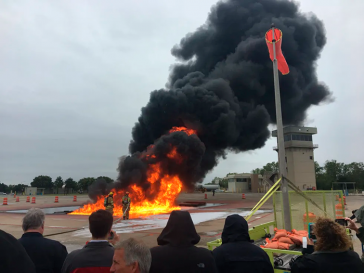
Aqueous film-forming foams (AFFF) were first developed by Naval researchers in the 1960s. Their PFAS additives give AFFF unique hydrophobic and surfactant properties, which has led to their pervasive, international use in fighting fuel and chemical fires over the last fifty years. Unfortunately, their use has also led to groundwater contamination at hundreds of sites in the U.S. With their known environmental and health impacts, many local municipalities, U.S. states, and European countries are starting to turn away from PFAS-containing firefighting foams. Now, organizations want to ensure that PFAS-free foams are safer than ones with PFAS.
“We have a history of substituting one hazardous chemical with another that may not be any better,” said STEEP researcher and Harvard epidemiology professor, Philippe Grandjean. Experts call this common practice “regrettable substitution.” A well-known example is bisphenol A (BPA), a common additive in plastics, which was replaced with BPS and BPF, that share the same endocrine-disrupting properties as BPA, making them no safer. A similar trend has occurred with many chemical additives in pesticides, flame-retardant containing furniture, cosmetic products, and non-stick surfaces, where “Gen-X” PFAS chemicals were created to replace PFOA and PFOS.
With recent demand, production companies have ramped up research and development of new PFAS-free foam formulations that achieve the same performance standards as AFFF while meeting new environmental standards. Yet without chemical disclosure requirements, consumers have no way of knowing what is in these new products. One U.S. nonprofit, Clean Production Action, has launched the first eco-label certification program for PFAS-free firefighting foams — “GreenScreen Certified Standard for Firefighting Foams.” The program ensures that foams claiming to be PFAS-free are, in fact, free of these added chemicals, as well as thousands of other chemicals of high concern. The program also plans to expand its framework to evaluate safer PFAS-alternatives in other products, such as food packaging.
Currently, U.S. airports are required by the Federal Aviation Administration (FAA) to use PFAS-containing foams until 2021. U.S. military bases also require the use of PFAS-containing foams, which Congress has directed to be phased out by 2024.

